Free US Shipping On Orders Over $49
Easy 30-Day Returns
Financing Available Through ![]()
Free US Shipping On Orders Over $49
Easy 30-Day Returns
Financing Available Through ![]()
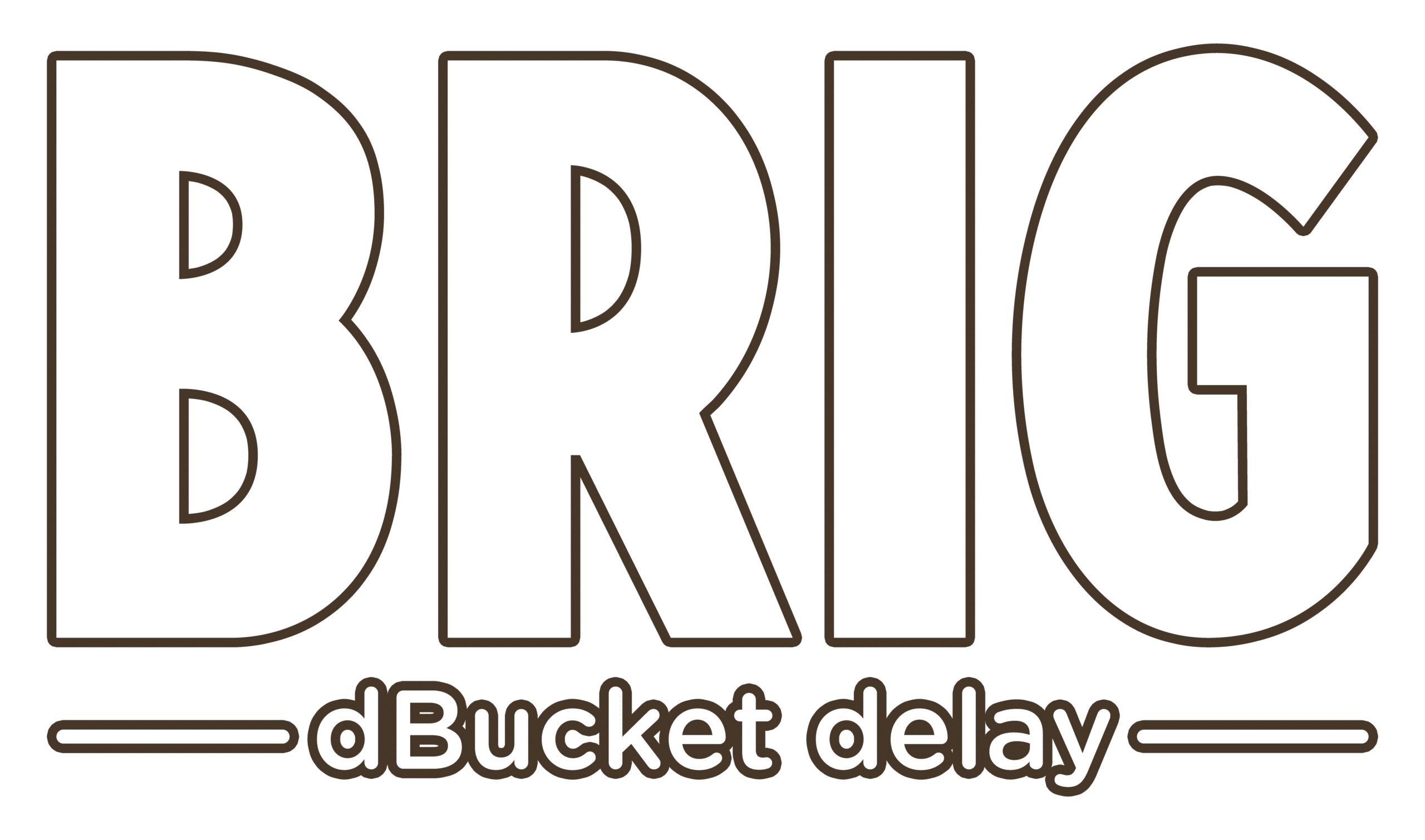
$259.00
-
Availability: In stock.
Ships same day, or next business day.
The delays that become true classics do not simply repeat the notes you play.
They do something special to each delay repeat – something that evokes a feeling, fueling the music and inspiring you.
Plug into Brig, play a note, and you’re instantly drawn in by repeats that evolve with captivating complexity and uncommonly rich tonal characteristics.
Brig delivers all the warmth, subtle grit and unique tactile playing experience of analog bucket brigade delays (BBDs), offering three distinct delay voicings in one highly addictive stereo pedal.
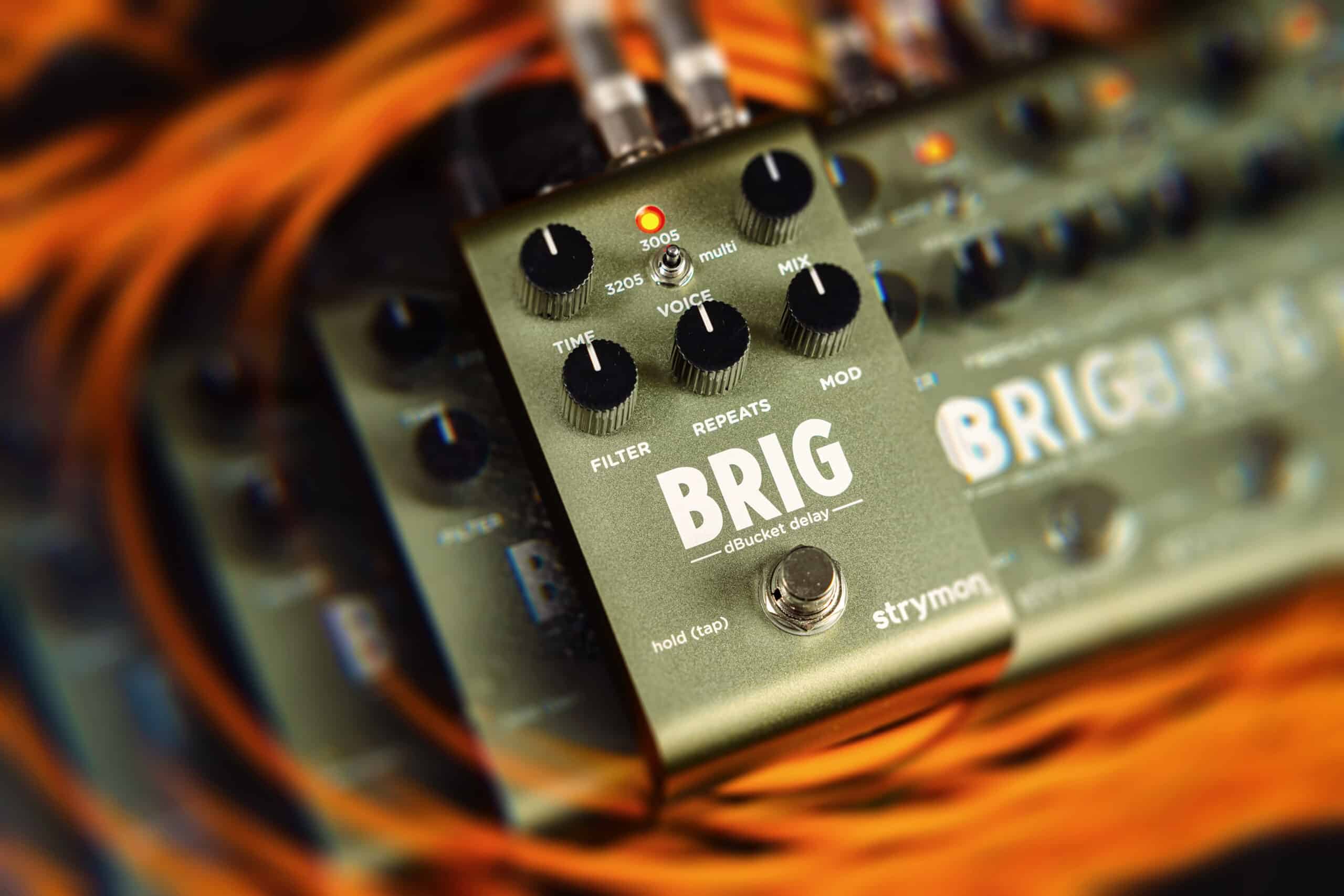
Brig’s stunning dBucket sound generation gives you three different and meticulously crafted analog delay voicings.
The 3205 voice delivers gritty repeats that can morph as it feeds back, creating sounds ranging from gorgeous slapback echoes to psychedelic sci-fi effects.
The 3005 voice recreates a dual MN3005 BBD chip circuit running at 15V for longer delay times, higher headroom, and warm repeats with a soft, dreamlike quality.
The Multi voice features two cross-coupled, super-clean dBucket delay lines with golden ratio timing to create complex soundscapes and a huge stereo soundfield that remains musical and clean even while sitting on the edge of self-oscillation.
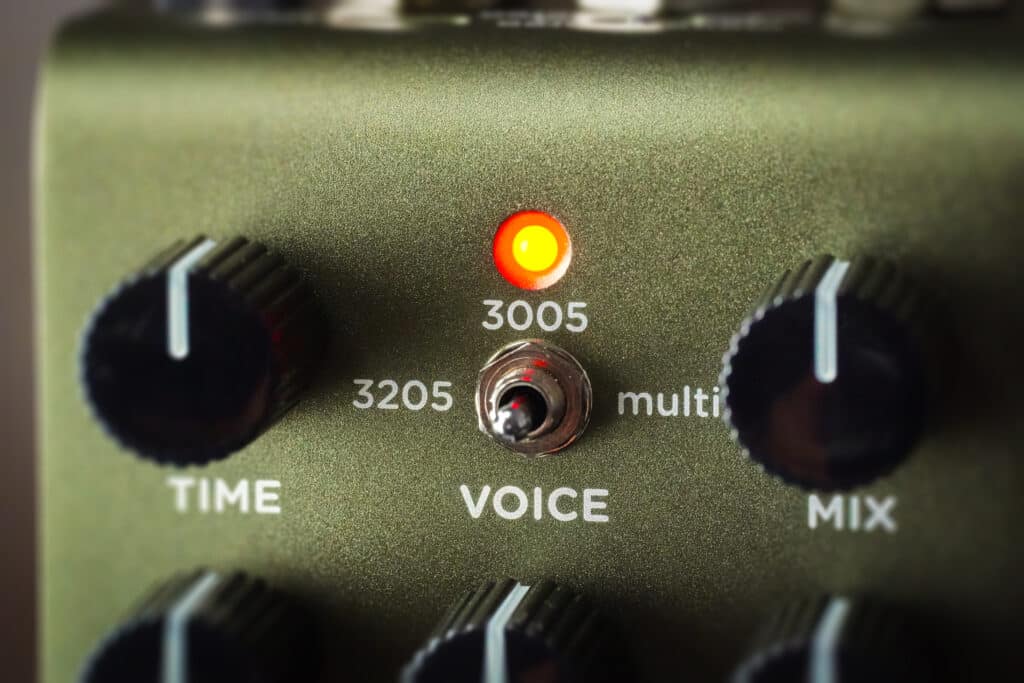
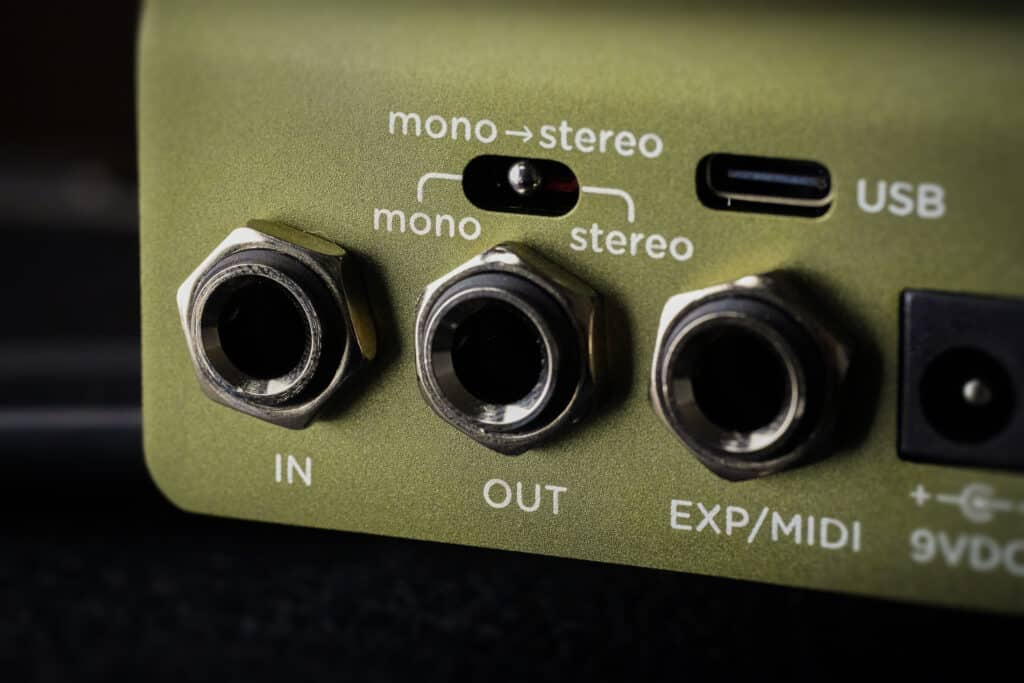
Brig is a triumph of compact design, offering a huge amount of power and flexibility in an elegantly small form factor: Three truly distinct delay voices. Artifact-free tap tempo. Stereo operation. Straightforward responsive controls and expression pedal capability. High-impedance, ultra-low noise discrete Class A JFET stereo input preamp for exceptional touch sensitivity, dynamics and feel. MIDI control for tempo, patch save/recall, and more. Premium components, rugged construction, and a USB jack for controlling the pedal via MIDI from a computer or for performing firmware updates.
Meticulously Made.
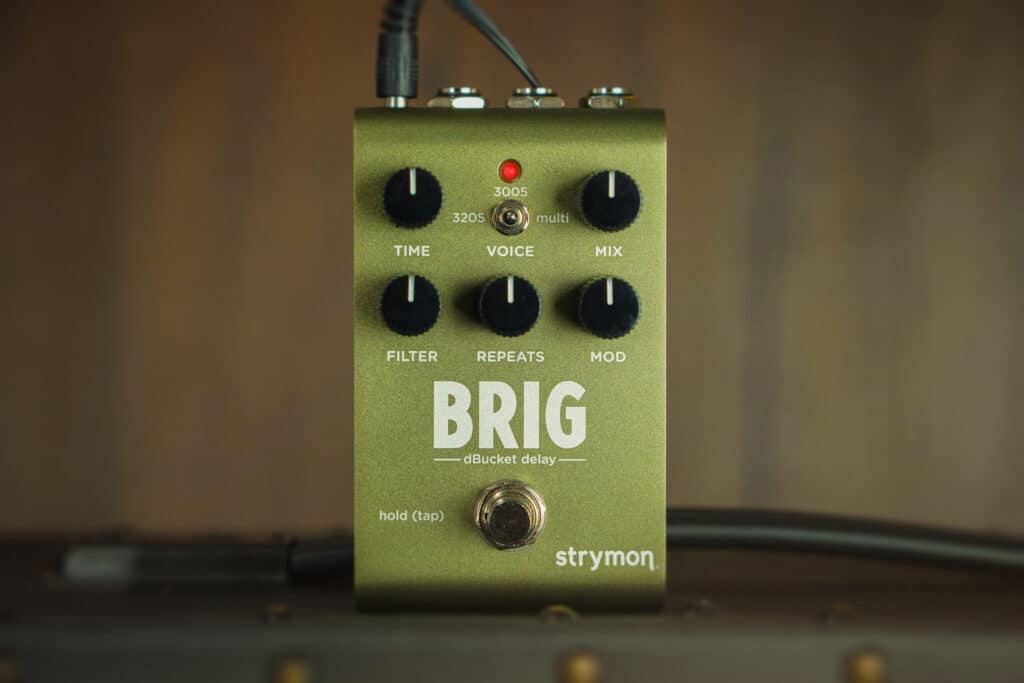
Brig’s voices are crafted with an attention to detail that encompasses not only the characteristics of the BBD chips, but also the surrounding circuitry responsible for turning those early designs into the classics they are considered today.
Magic Modulation.
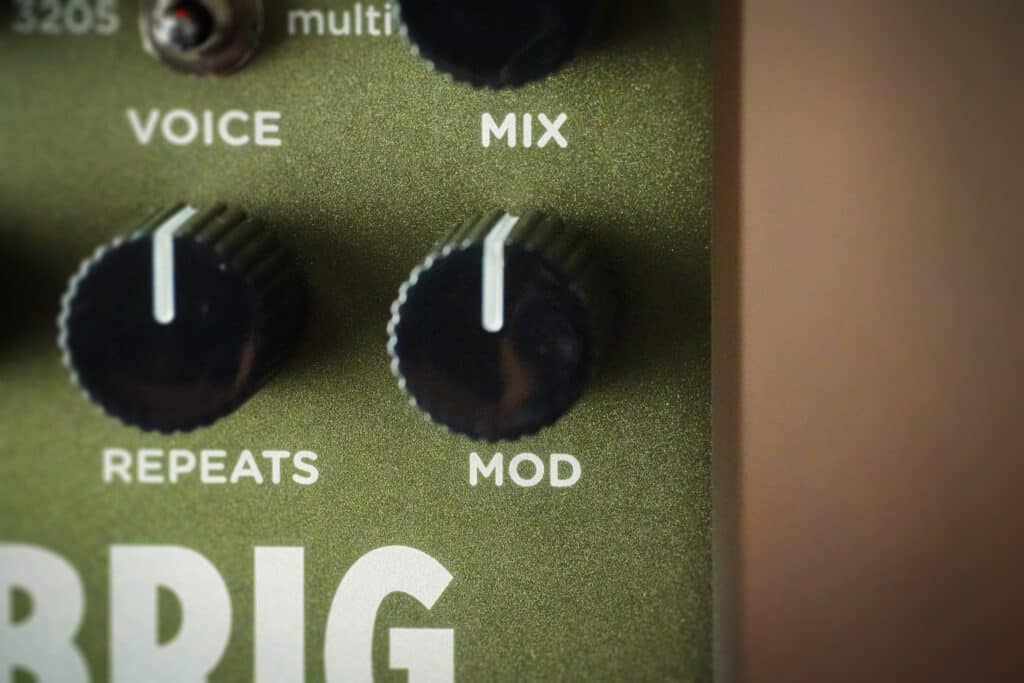
Brig’s modulation is individually voiced for each of the three delay types, and was carefully tuned to create beautifully lush modulation at any delay time or modulation speed.
And while the Multi delay voice with its dual cross-coupled ping-pong delay lines would seem the obvious go-to for creating a huge stereo field, Brig’s modulation is designed to produce awesome stereo effects with the 3205 and 3005 voices as well.
To reveal a hidden superpower, set the 3205 voice to its minimum 30ms delay time and turn up the modulation for sumptuous bucket brigade chorus effects.
Play The Feedback.
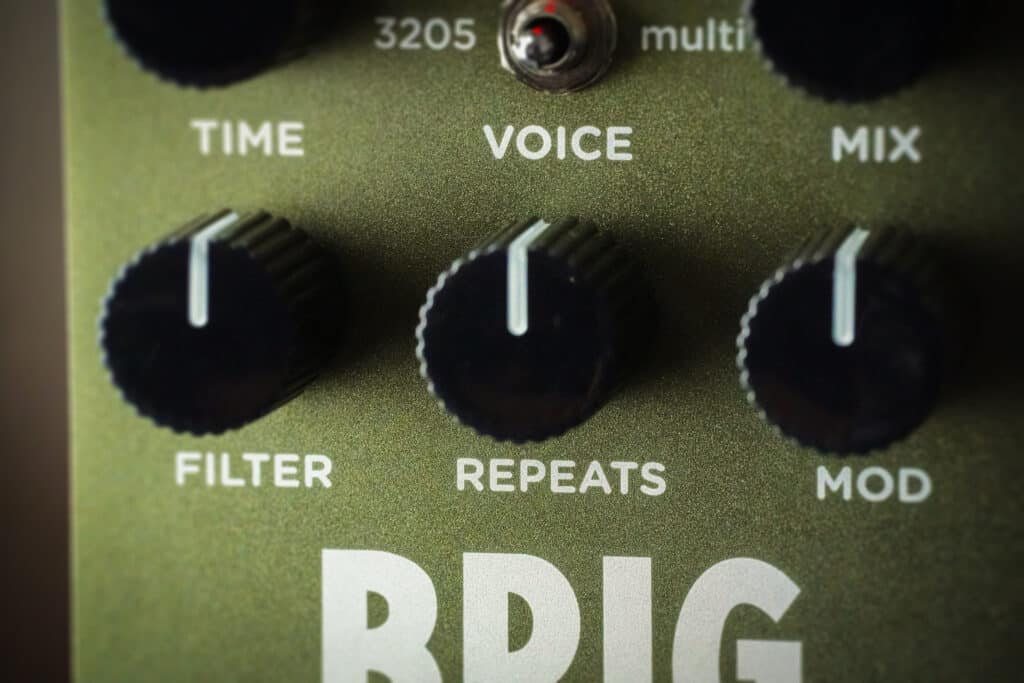
Classic bucket brigade delays created a unique variety of instantly recognizable, sought-after feedback effects, and Brig faithfully and organically reproduces the same sounds and experience.
Brig’s smooth, responsive controls and remarkable dBucket sound engine invite you to crank up the repeats, twist the Time knob, adjust the filter, and get lost in vintage sci-fi psychedelia.
Besides all the fun to be had by pushing Brig into full self-oscillation, just sitting on the edge of runaway feedback can create intriguing sound beds under your lead or rhythm playing.
As an added bonus, each of Brig’s three delay voicings has its own distinct feedback characteristics, so you can tailor the feedback response to fit the sound you’re going for.
Don’t Forget The Noise.
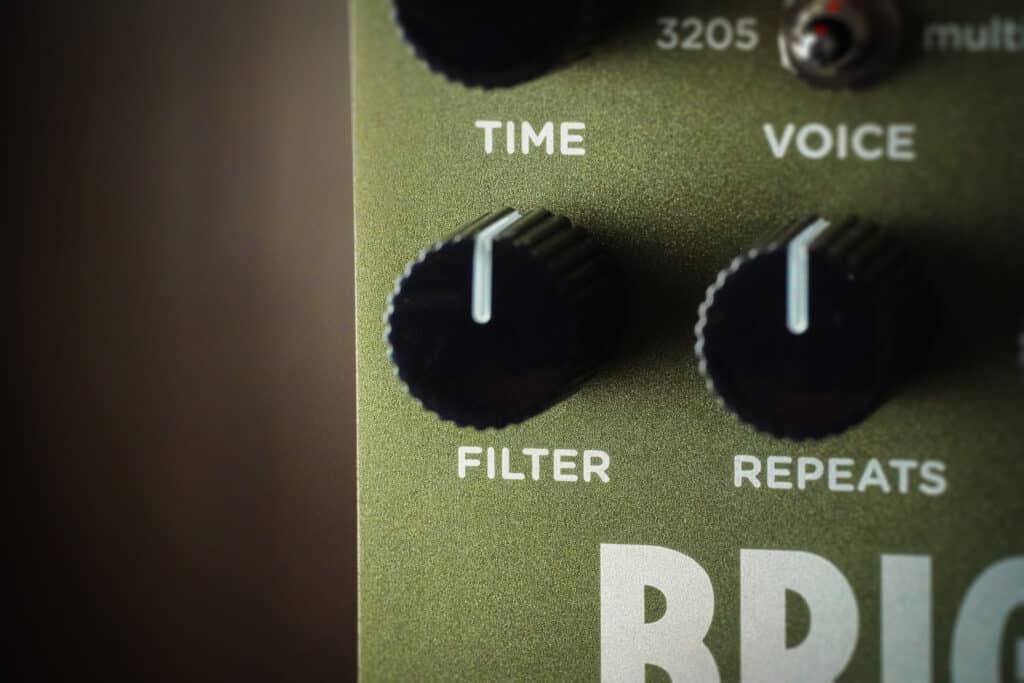
A whisper of gentle noise is part of the sound of bucket brigade analog delay repeats (which is traditionally shaped and controlled by companding and filtering processes in the analog domain), and all of that sonic detail and organic behavior is part of the sound of Brig.
Especially with the 3005 voice, the subtle noise adds a dreamlike quality to the repeats. Lovely as it is, the noise is also optional, and is easily dialed out by turning the filter knob clockwise past 2 o’clock.
Brig’s filter is customized for each voice, controlling not only noise level and EQ for repeats but bucket loss as well.
Artifact Free Tap Tempo.
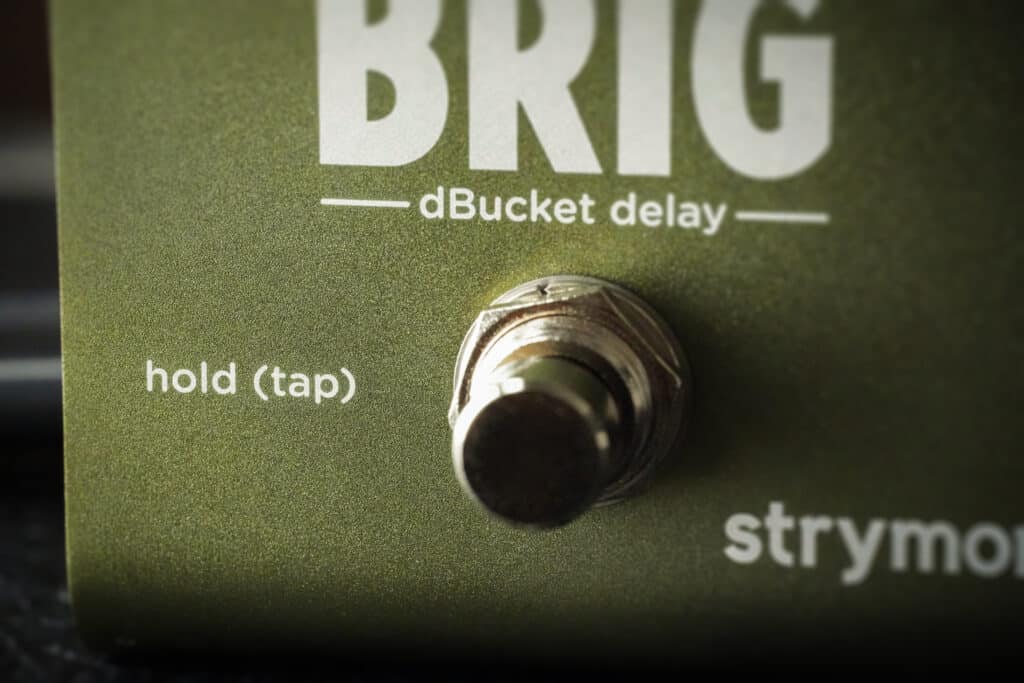
Modern technology FTW: Tapping in tempos with Brig works in a seamless way that would be impossible with a real analog delay.
Confidently tap your tempos with no pitch shifting, no clicks, ramps or mutes. All those glorious and unique bucket brigade pitch-shifting, spaceship-launching and delay character-modifying effects are always available when setting tempo with the Time knob, but when tapping tempo Brig changes to new values smoothly and keeps you in the groove. And once tempo has been tapped in, you can use the Time knob to set the Tap Division for triplet, eighth, dotted eighth, or quarter note.
Limitless Possibilities.
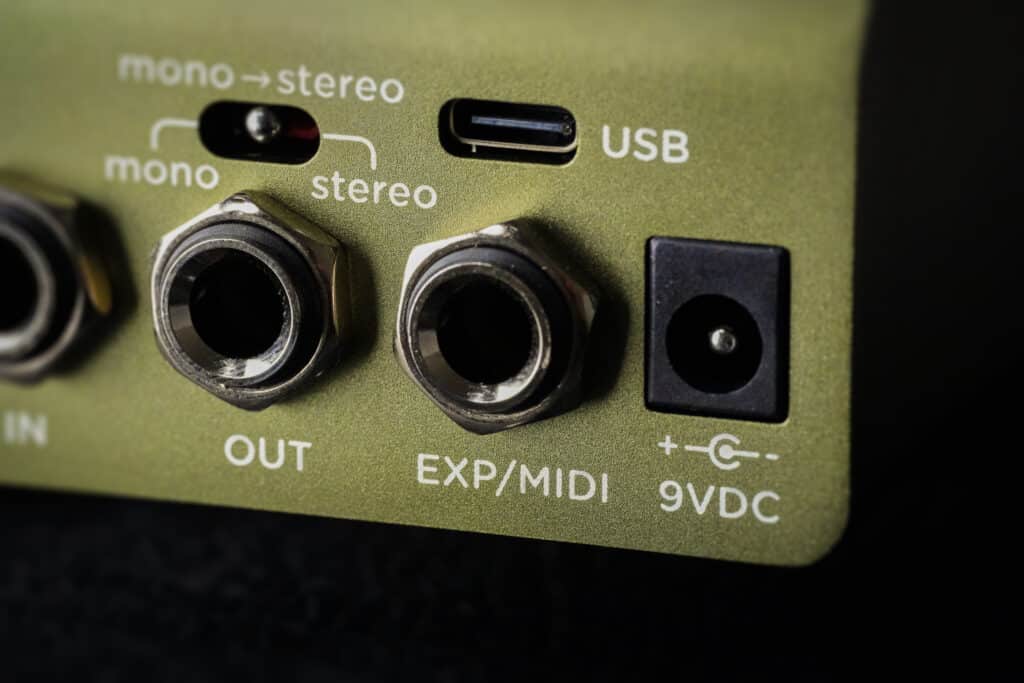
Brig features full MIDI implementation and 300 presets, allowing you to control it remotely by sending MIDI commands from your controller or DAW via the EXP/MIDI jack or USB-C connection.
Remotely bypass or engage the pedal, automate decay time or other knob adjustments in your DAW or recall unique presets for each song on your setlist — the possibilities with MIDI are limitless.
Choose Your Bypass Mode.
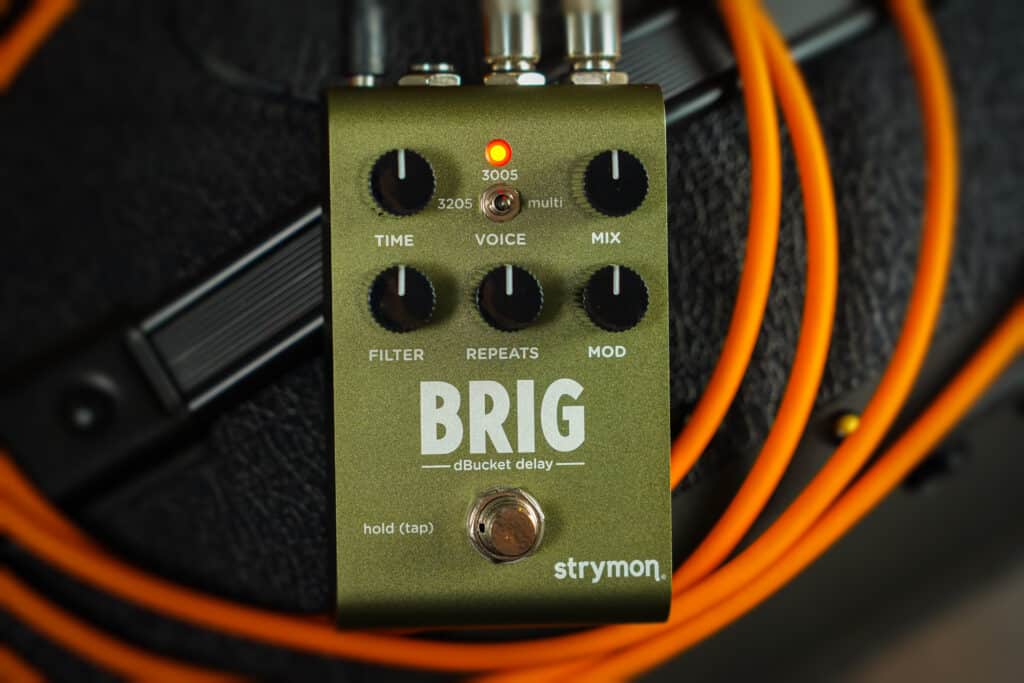
Brig lets you choose between electromechanical relay-switched true bypass for a 100% untouched and unprocessed signal when the pedal is not engaged (which is the default), or our premium buffered bypass, which preserves your signal’s integrity by preventing the high frequency roll-off that can happen due to longer cable runs.
Analog Touch.
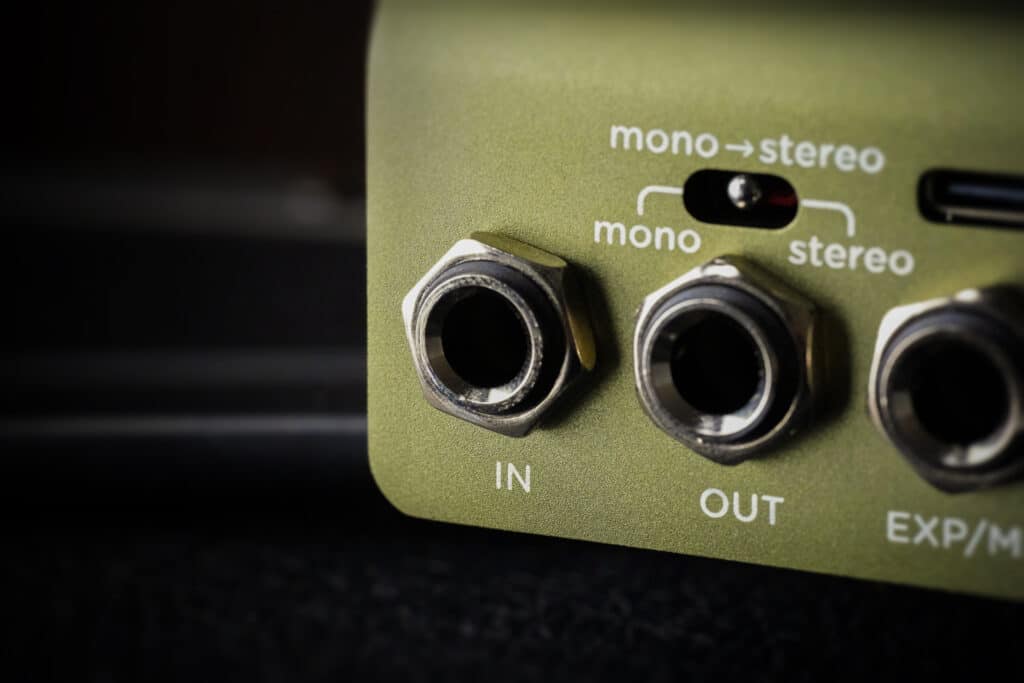
Uncompromised dynamics and feel. Exceptional touch sensitivity and responsiveness. Brig feels just as good as it sounds, thanks to a high-impedance, ultra-low noise and discrete Class A JFET preamp input.
Moving In Stereo.
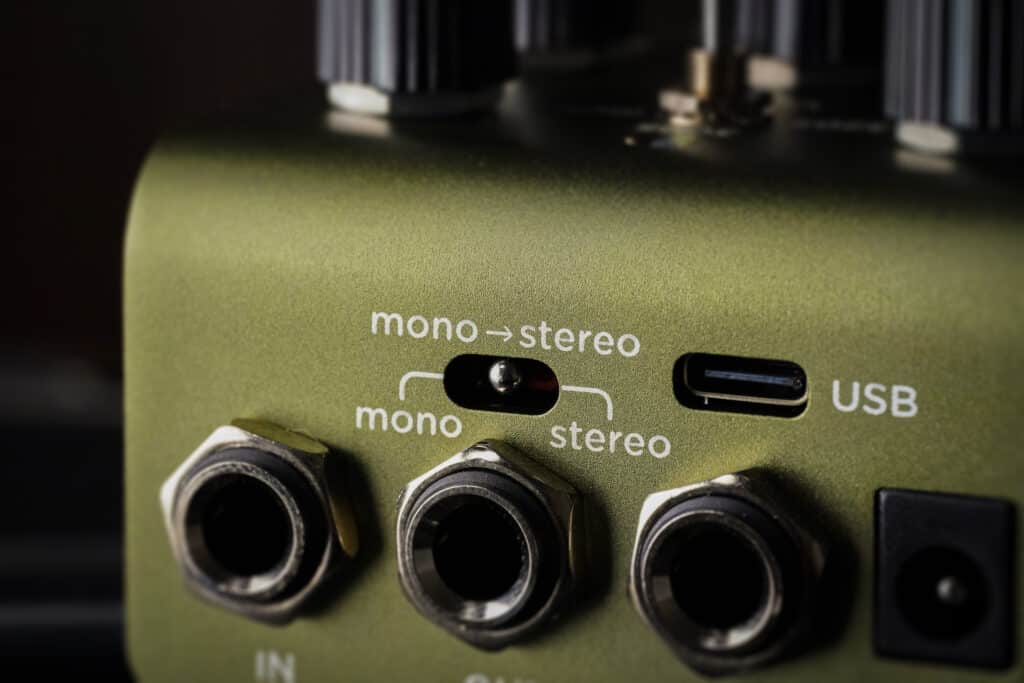
Even though it might look like it’s a standard mono effect, there’s no need to make compromises when it comes to signal routing or pedal placement with Brig — it’s a stereo delay pedal with full stereo in/out capabilities.
Equipped with a single TRS input and TRS output jack, the pedal keeps to a compact form factor while still giving you the option to use it in stereo.
A dedicated rear panel Input switch allows you to determine the audio routing, selecting between Mono In → Mono Out, Mono In → Stereo Out, or Stereo In → Stereo Out (stereo in and out requires a TRS cable for each jack).
Power To The Pedal.
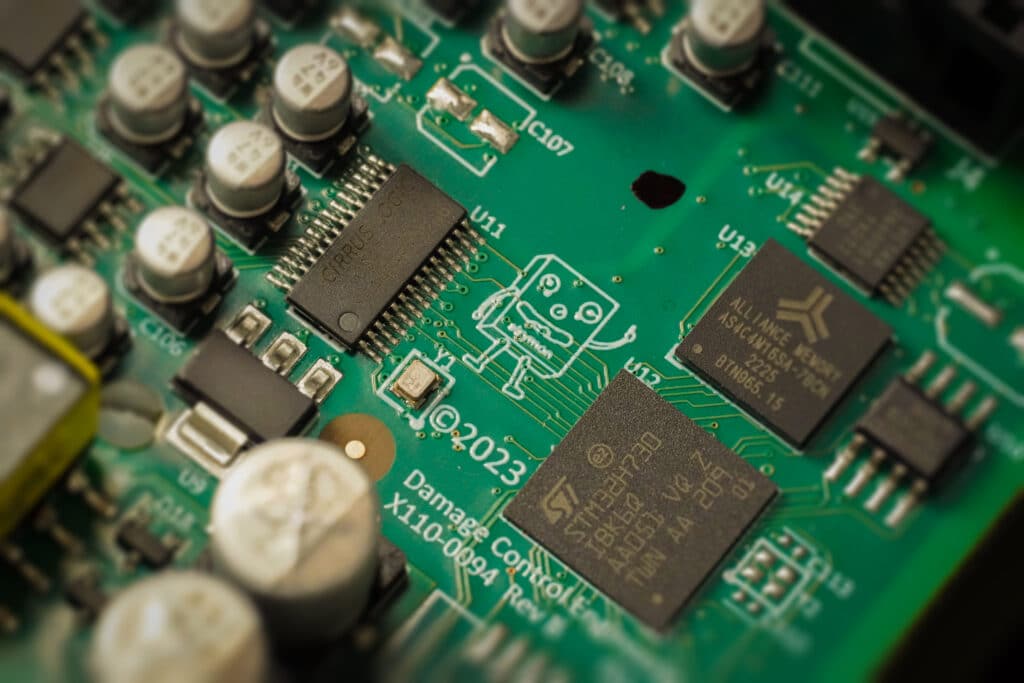
An evolution in technology led by mobile phones and laptop computers now allows our pedals to perform more simultaneous processes than ever before, and with significantly less power draw.
That means more processing power for every sonic nuance, and less power consumption on your pedal board.
Hover over the interactive dots to learn more about Brig’s knobs, switches, and inputs/outputs.
Tap on the interactive buttons (+) to learn more about Brig’s knobs, switches, and inputs/outputs.
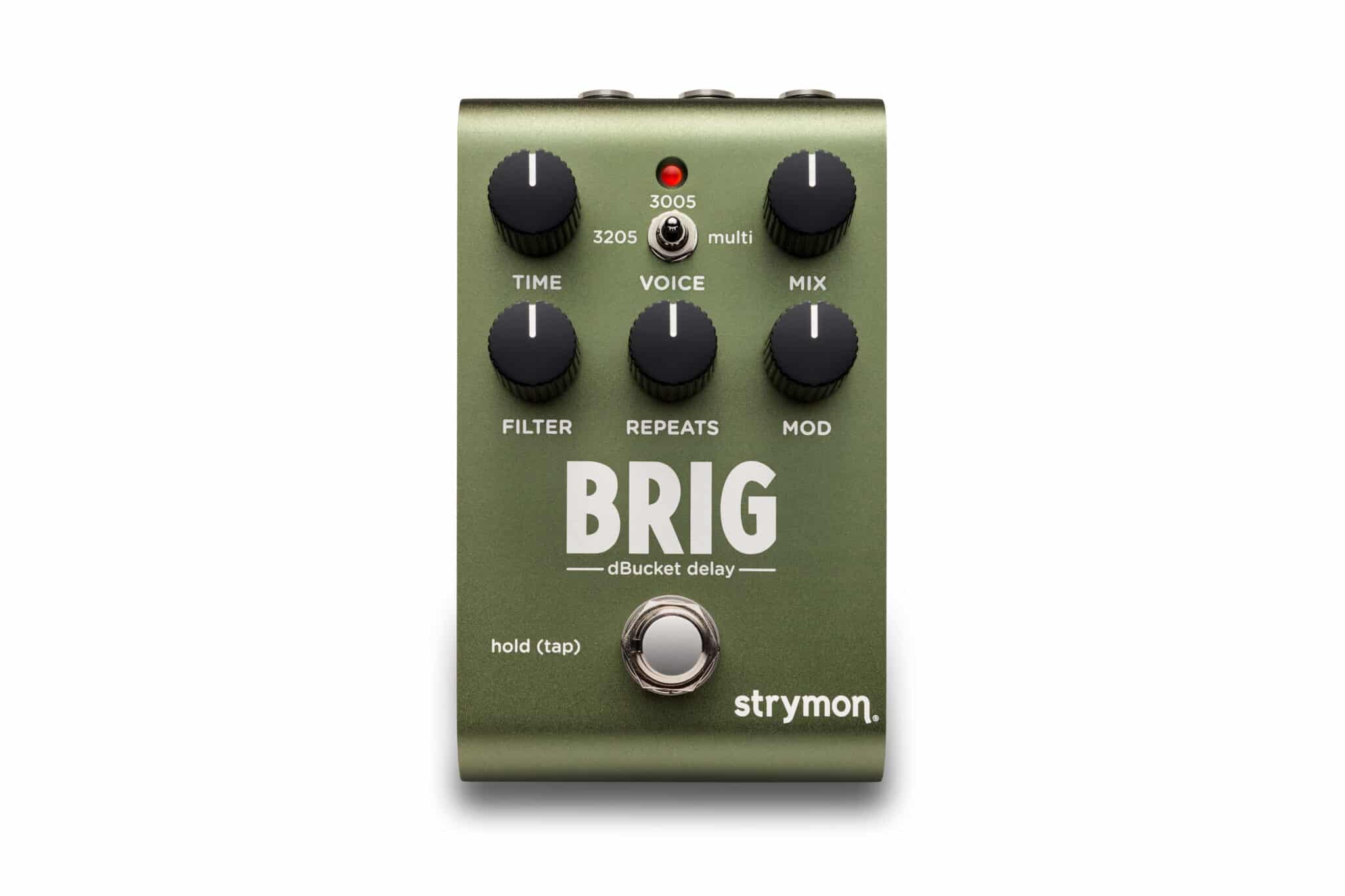
FILTER
Adjusts the EQ filtering, noise, and bucket loss of the repeats based on the selected VOICE.
MOD
Adds LFO modulation to the delay time. Modulation is off at the minimum setting. The
modulation speed is slow in the first half of the knob and fast in the second half of the knob, increasing in intensity as the knob is turned clockwise.
TIME
Controls the delay time according to the selected VOICE. Delay clock is continuously variable so that turning it while repeats are
happening can produce interesting pitch effects.
MIX
Controls the delay mix from full dry at minimum to full wet with no dry signal at maximum. A 50/50 mix occurs at approximately 3 o’clock on the knob.
VOICE
3205: 30–300ms — Recreates the character of vintage delay pedals that used a single low voltage MN3205 BBD chip for gritty repeats—great for slap back, leads, and sci-fi sounds
3005: 100ms–1 sec — Recreates the character of vintage delay pedals that used two MN3005 BBD chips at higher voltage for longer delay times with a dreamy quality
multi: Creates complex soundscapes using two cross-coupled, super-clean BBD delay lines with golden ratio timing
FOOTSWITCH
Engages and disengages the effect. The RED
LED on at the top of the pedal indicates that
the effect is engaged.
Press and hold the footswitch for 1 second to enter/exit TAP mode and tap quarter notes to set your delay time. The LED will flash RED
and BLUE to indicate the tempo.
REPEATS
Varies the number of delay repeats from one to runaway oscillation. Set to 3 o’clock for sustained, infinite repeat without runaway.
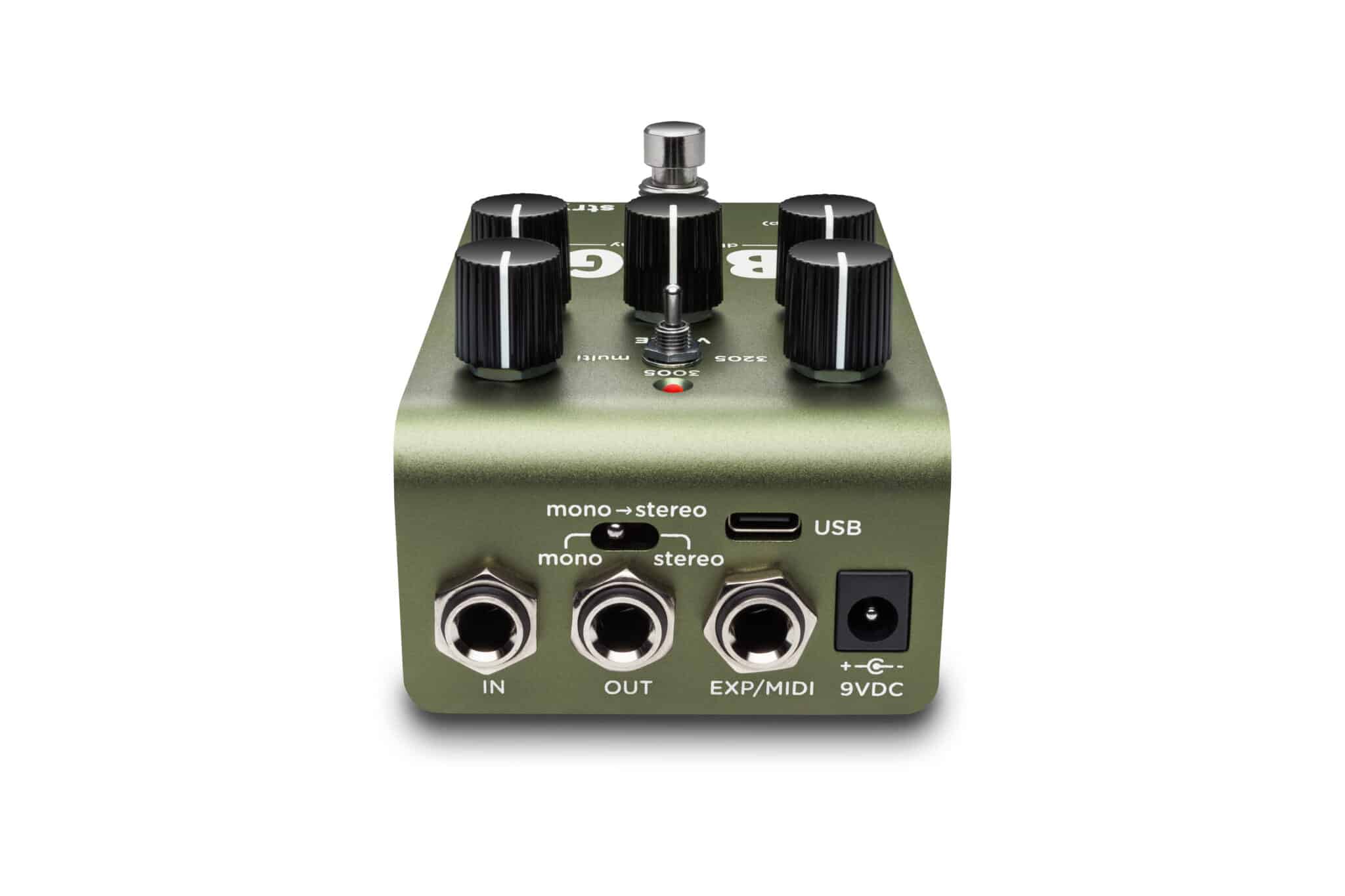
IN
High impedance, ultra low-noise, discrete Class A JFET preamp input.
TRS adapter cable required for stereo input signal (not included).
OUT
Low impedance stereo TRS output. Use TS cable for mono output or TRS for stereo output.
EXP/MIDI
Multifunction communication jack for external control of Brig's features and functions. Use a standard TRS expression pedal for continuous control over the knobs of the pedal (default setting).
Can be set to operate in one of five modes: Expression Pedal, Favorite, Tap Tempo, Infinite, or MIDI Mode. See User Manual for details.
9V DC
Use a power supply with the following rating: 2.1mm, 9VDC, center negative, 250mA minimum. Power supply not included.
TRS SWITCH
mono: mono input, mono output
mono stereo: mono input, stereo output
stereo: stereo input, stereo output
NOTE: Stereo operation requires a TRS adapter or cable.
USB
Computer connection for controlling Brig via MIDI, for performing firmware updates and for connection to Strymon’s Nixie editor/librarian software (coming soon).
“Ultimately though, the Brig is a more than worthy successor to the Brigadier. Arguably its smaller footprint and new features make it even better, while still offering some of the very best-sounding bucket brigade-style delays I’ve had the joy of playing.” — Guitar.com
“The Brig packs a great emulation of Bucket Brigade delay glory into a compact package – and more besides – to give this underrated side of Strymon another chance to shine.” — MusicRadar
“If you’ve used a Strymon pedal before, it should come as no surprise that they’ve really nailed the analogue delay sound here, and while the controls are few in number there’s a lot of sonic mileage to be had from this pedal.” — Sound On Sound